The Japanese word Santoku can be translated literally into English as meaning “three virtues” or “three uses.” Santoku chef knives are great for three primary uses: mincing, slicing, and dicing. If you’re looking for a fast, versatile knife for your kitchen, it can be a fantastic option.
On this page, we explore the 5 best Santoku knives money can buy in 2023. We’ve considered a variety of factors including sharpness, durability, and overall balance.
Pressed for time? Our favorite of the bunch has got to be this one:
It’s consistently well-reviewed online and comes with the comfort, sharpness, and performance that most people will need.
Keep in mind that your specific goals and preferences will determine the option that works best for you; there’s no one-size-fits-all approach to chef’s knives.
Want to know how to spot options that will work for you? Check out our chef knife buying guide.
Still, shopping? This article may be of use – best chef knives.
Top 5 Santoku Chef Knives
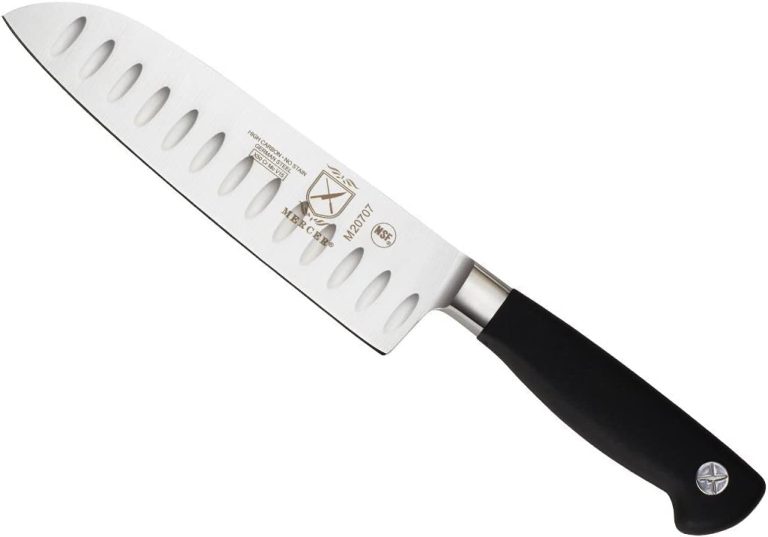  Editor's Choice Editor's Choice | ||||
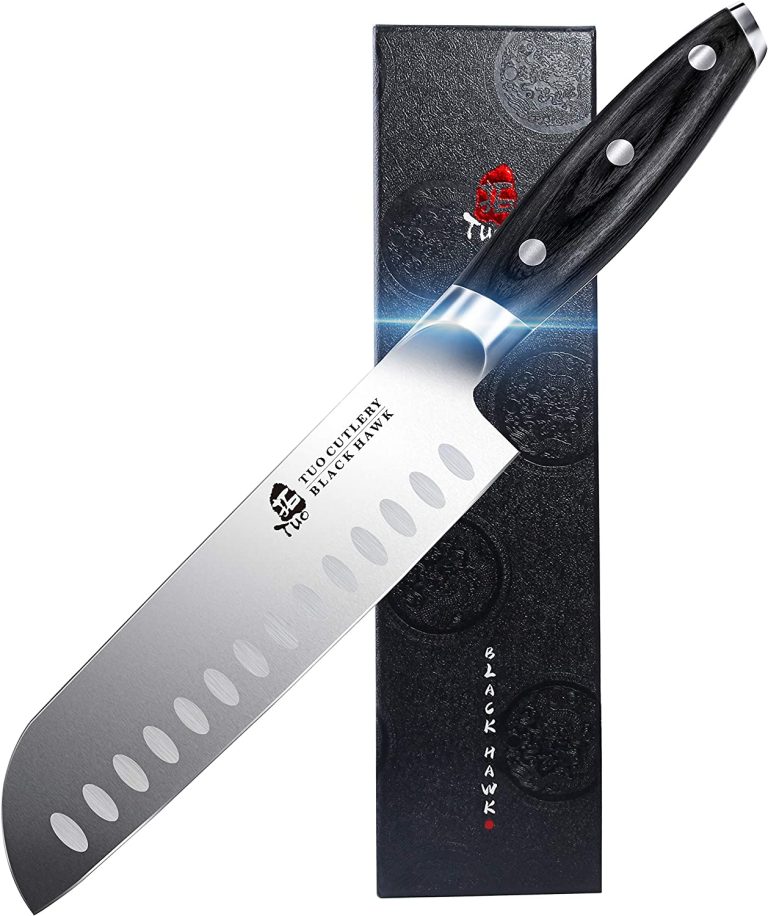 | ||||
 | ||||
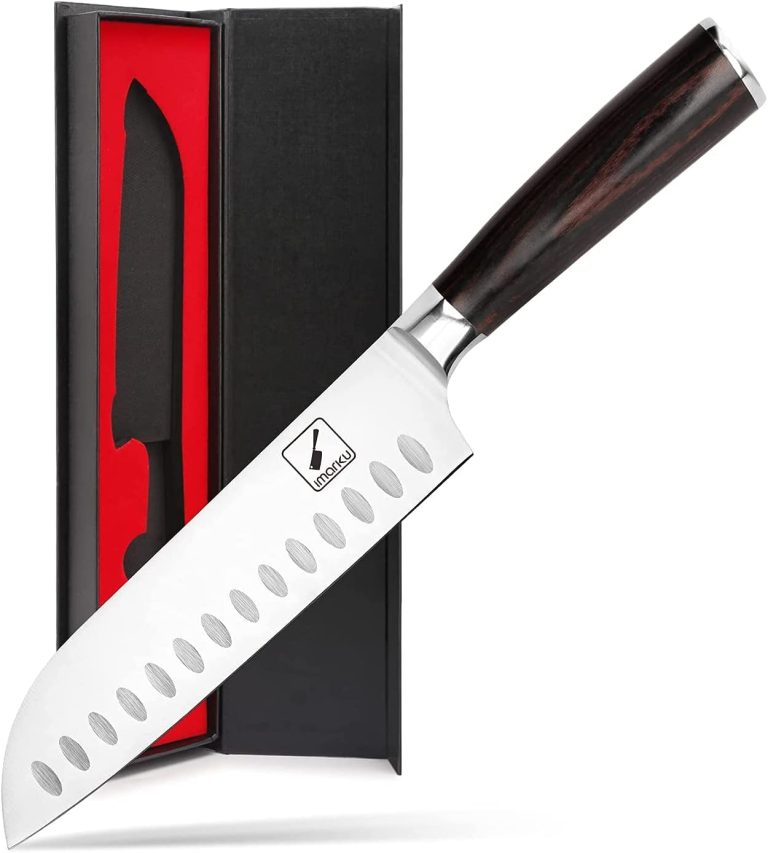 Best Budget Nakiri Knife | Check Price | |||
 | Check Price |
1. Mercer Culinary M20707 Genesis 7’’ Santoku Knife – Editor’s Choice
A fantastic all-rounder Santoku knife that should be perfect for most people.
Read our full review >> Mercer Culinary Genesis 7” Santoku knife
Mercer Culinary M20707 Genesis 7’’ Santoku Knife Specifications
About the knife
As mentioned above, we’re huge fans of this option from Mercer Culinary. It can easily be picked up for less than $50. In our opinion, this is an absolute steal. The HRC of 56+/-1 should offer more than enough sharpness and sharpness retention for most people. It also has the added benefit of increased blade flexibility for tasks that require that extra level of dexterity.
The Santoprene handle on this Santoku knife feels phenomenal in the hand. In short, Santoprene is a high-performance thermoplastic elastomer that offers excellent levels of heat resistance, moisture resistance, and durability.
When coupled with the full-tang design and exceptional weight distribution of this product, you’re looking at a knife that feels great and will last many years into the future. One thing to mention is that the HRC rating of this model means that you may have to sharpen the blade slightly more frequently.
For the vast majority of kitchen prep, this knife will be an absolute Godsend.
Maintenance and Cleaning
We recommend reading Mercer’s sharpening overview before doing any work on your product. They recommend first deciding whether you need to hone or sharpen your Santoku knife. You’ll need either a whetstone or steel to do this.
You shouldn’t have to sharpen this knife more frequently than once a month. This knife is hand-wash only and should be cleaned with mild soaps and moderate temperatures.
Pros:
- Very comfortable
- Santoprene handle for durability
- Full-tang design
- Scalloped blade for anti-sticking
Cons:
- Regular sharpening may be necessary
- Larger hands may cramp
- Make sure you need flexibility
2. TUO 7’’ Santoku Chef Knife Black Hawk series
An elegant, high-performance Santoku knife that’s staggeringly affordable.
TUO 7’’ Santoku Chef Knife Black Hawk series Specifications
About the knife
We rarely see such an effortless blend of quality, performance, and style, especially for less than $45. We’re happy to report, however, that TUO has knocked it out of the park here.
This knife feels fantastic in the hand, is very well balanced, and is considerably more durable than similar products in this category. We’re particularly fond of the Pakkawood handle. Not only does it look great, but it also resists heat and moisture like a champ.
Your handle will stay nice and grippy for all your slicing, dicing, and mincing tasks. The HRC of 56+ on this knife means you get a nice balance of sharpness and flexibility. You’ll probably be sharpening it once a month or less.
Maintenance and Cleaning
TUO recommends using high-quality steel to hone your Santoku chef’s knife at an angle between 15-20 degrees. You’ll be running the knife edge along with your steel several times to regain sharpness. The company discusses this in detail here.
You might like to oil your Pakkawood handle from time to time. Tung or mineral oil can be used for this.
TUO doesn’t recommend using a dishwasher to clean this product. Hand-wash using mild soaps and moderate temperatures. Allow drying fully before storing in a knife block.
Pros:
- Pakkawood handle
- Exceptional for mincing work
- Very comfortable
- Balance of sharpness and flexibility
Cons:
- The rivets of the handle aren’t flush
- Could be sharper
- Blade can chip
3. Wusthof Classic Santoku Knife 7’’
A premium option that’s backed by a lifetime warranty for added peace of mind.
Wusthof Classic Santoku Knife 7’’ Specifications
About the knife
Considering the higher asking price for this one ($160+), you’d be forgiven for wondering whether it’s worth the money. Trust us – Wüsthof are legends in the world of chef’s knives for a reason.
For starters, this knife is made from premium high-carbon steel. This means it’s better at standing up to abrasion, is sharper than other knives in the same category, and will hold this sharpness for significantly longer than you may be used to.
This is why many professional chefs opt for high-carbon products when shopping. Just make sure you’re using a good technique when mincing, slicing, and dicing; harder blades like this can chip in the wrong pair of hands.
This is a phenomenally well-balanced and comfortable knife that should feel right at home in most kitchens.
Maintenance and Cleaning
Wüsthof recommends using a 10-degree angle when sharpening its Santoku knives. A whetstone, steel, or electronic sharpener can be used. Alternatively, they recommend using Eversharp Knives for a professional finish.
Hand-wash this knife and make sure it’s completely dry before storing.
Pros:
- High-carbon steel blade
- Great sharpness and sharpness retention
- Lifetime warranty against defects
- Well balanced
Cons:
- Quite expensive
- Blade can chip
- Shipping may take a while
4. Imarku 7’’ Santoku knife – Best Budget Santoku Chef Knife
The best budget Santoku chef’s knife we’ve ever seen.
Find amazing chef knives under $200 with our in-depth review.
Imarku 7’’ Santoku Knife Specifications
About the knife
If you’re looking for a budget option that can go the distance, look no further than this fantastic Imarku knife. For less than $50, you get a high-carbon steel blade, full-tang design, forged blade, and an HRC of 57+1!
If you know anything about chef’s knives, you’ll understand that this level of quality is phenomenal at this price point. But how does it actually feel to use? The good news is that the Pakkawood handle is very comfortable in the hand and the weight distribution is fantastic throughout.
This is a durable, surprisingly sharp blade that will hold its sharpness for much longer than you may be used to. Just be aware that there is one compromise here; this knife only comes with 1 year of warranty coverage.
This knife is most suitable for newcomers to Santoku knives who are looking to dip their toes in the pool.
Maintenance and Cleaning
When sharpening this knife, Imarku recommends this 2-step sharpening tool. Alternatively, you might like to use a whetstone at an angle of around 15 degrees.
You should never clean this knife in the dishwasher. Use moderate temperatures and mild soaps and allow the products to dry completely before storing.
Your Pakkawood handle can be oiled from time to time using tung or mineral oil.
Pros:
- Phenomenal value
- Great HRC rating
- High-carbon steel blade
Cons:
- Only 1 year of warranty
- Blade may chip
- Perhaps a little light
5. Dalstrong 7’’ Shogun Series Santoku Knife
A glorious Damascus/ Santoku knife with a premium G10 handle.
Dalstrong 7’’ Shogun Series Santoku Knife Specifications
About the knife
This Dalstrong Santoku knife is the sharpest option on this page by a significant margin. The HRC rating of 62+ means that this blade is razor-thin and capable of an exceptionally high level of performance. It should also retain this edge for longer than fewer premium knives on the market.
Just make sure you maintain good technique when chopping as harder knives like this is more prone to chipping. So, what else do you get for your $120? In addition to a lifetime warranty and attractive Damascus steel build, you’ll also enjoy a durable full-tang design that should last you for many years to come.
We’re also big fans of how this knife feels to use; it’s very well balanced and the G10 handle is remarkably comfortable. The main benefit of this material is that it offers superior levels of durability and slip resistance.
If you know you need the best sharpness out there, this is the Santoku knife to go for.
Maintenance and Cleaning
If sharpening this knife yourself, start with a fine grain whetstone and use an angle between 10 and 15 degrees. If you’re inexperienced in this area, it might be best to use Dalstrong’s professional knife sharpening service.
It’s a little pricey but will guarantee you get the edge you’re looking for.
Never use a dishwasher to clean your kitchen knives. Hand-wash with moderate temperatures and mild detergents whenever possible.
Pros:
- Excellent HRC rating (62+)
- Premium G10 handle
- Great weight distribution
- Scalloped blade
Cons:
- Quite expensive
- Harder blades can chip easily
- The emblem can cause discomfort
FAQ
In this section, we’ll help you upgrade your knowledge of Santoku chef’s knives.
Read now >> Nakiri VS Santoku
What Is a Santoku Knife?
“Santoku” can be translated literally as “three virtues” or “three uses.” In the kitchen, these three uses are slicing, mincing, and dicing. When compared to a western chef’s knife, Santoku knives tend to be:
- Thinner
- Lighter
- Easier to handle in the kitchen
What Is a Santoku Knife Used For?
Any kitchen task involving fast slices, mincing, or dicing can be achieved very easily with this kind of knife. Most blades are scalloped to prevent meat, cheese, and fish from sticking to the product.
Santoku-based tasks include the following:
- Preparing vegetables
- Slicing meats, fish, and cheeses
- Mincing garlic and herbs
- Achieving “dainty” presentational cuts
- Coring and dicing fruits
- Peeling some fruits
- Much more
How to Hold a Santoku Knife?
Most Santoku chef’s knives aren’t built to rock back and forth like your average German-style western knife. This means that you’ll be using a vertical chopping motion for most kitchen tasks.
Hold your handle firmly while maintaining enough flexibility in your wrist. Keep your fingers clear of your cutting line at all times.
Watch this video from MonkeySee to learn more.
How to Use a Santoku Knife?
The versatility and comfort of your average Santoku knife mean that it’s suitable for a huge laundry list of kitchen prep work. Most tasks involving vegetables or fruit should be nice and easy with this kind of blade.
Dicing cheese and meat is another great example of when you should use a Santoku knife.
How to Sharpen Santoku Knife?
Santoku products can be sharpened in much the same way as your other kitchen knives. We recommend using a fine grains whetstone and an angle between 10 and 15 degrees. If your knife is particularly dull, try gradually moving up to higher levels of coarseness for best results.
You shouldn’t have to sharpen a high-quality knife more often than once a month.
What Size Santoku Knife Is Best?
Your preferences as a chef come into play here. Shorter knives tend to be easier to handle but longer blades offer greater coverage for fast mincing and dicing tasks. We recommend starting with a blade length of 7 inches. This should be a nice “sweet spot” for most people.
When to Use Santoku VS Chef Knife?
A Santoku knife could easily replace your western chef’s knife and vice versa. Your decision mostly comes down to your preferences as a chef. Prefer roll cutting, a heavier knife, and a slightly thicker blade? Stick with your western chef’s knife.
Like to vertically chop with a thinner, lighter blade? You might like to give Santoku a try.
Conclusion
We hope you’ve found the recommendations on this page helpful. While we think every one of them is fantastic in its own right, it’s worth reflecting on your preferences and goals as a chef. Weigh up your own budget and experience level when making a decision.
As mentioned above, all of these knives are hand-wash only; the heat and soaps used in most dishwashers will degrade high-quality products like these. Remember that our “best budget” option, while fantastic, only comes with a 1-year warranty.
Our favorite of the bunch is this one:
– Mercer Culinary Genesis 7’’

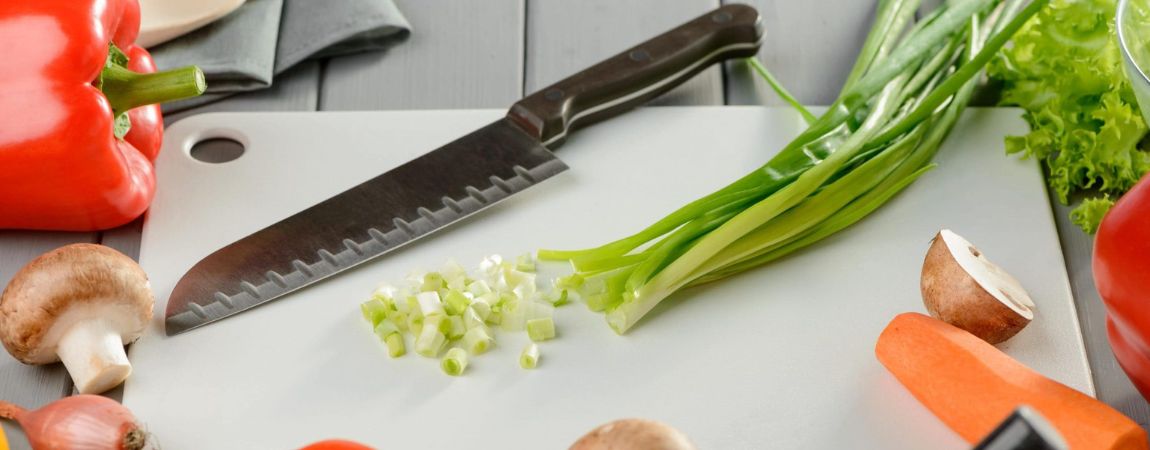
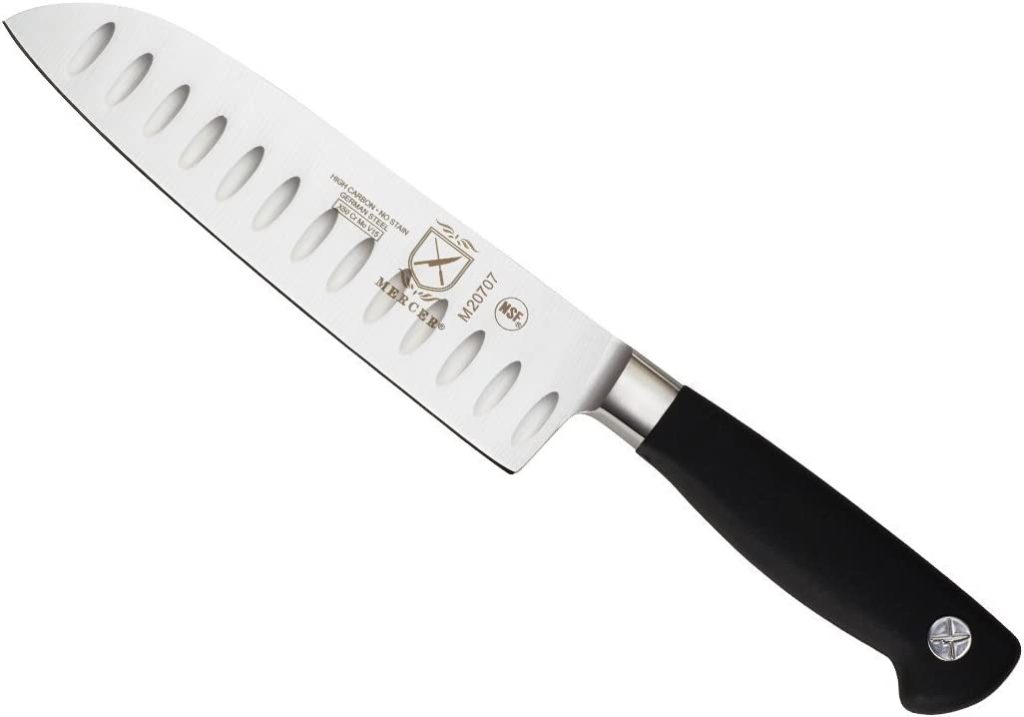
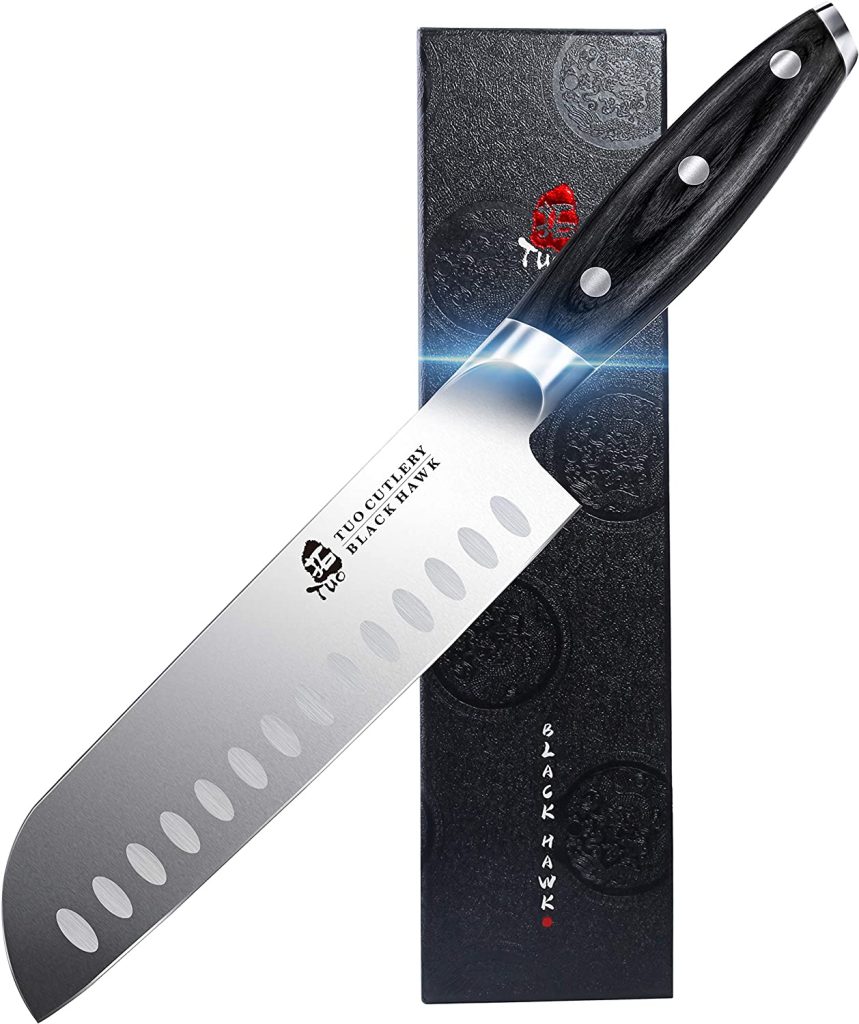
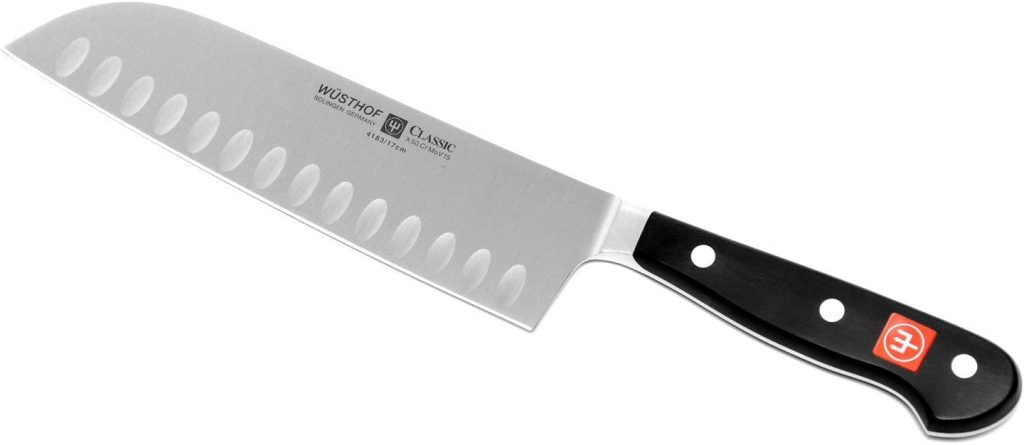
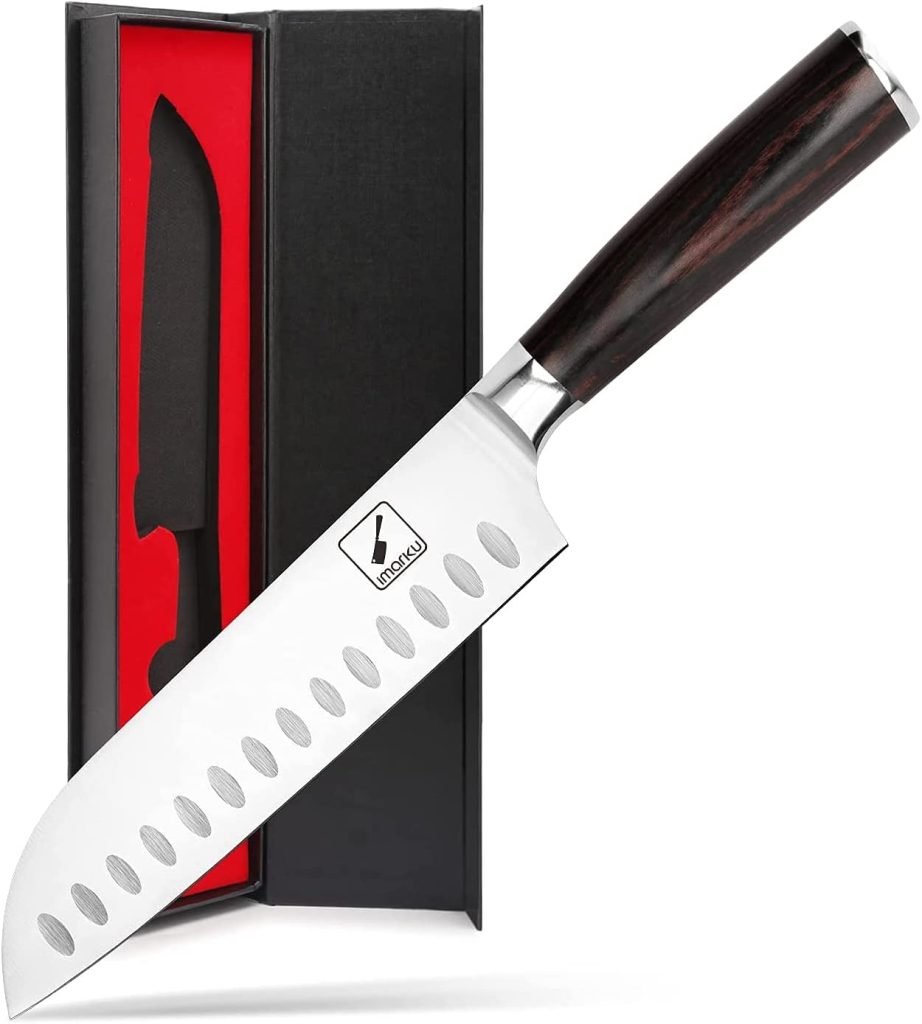
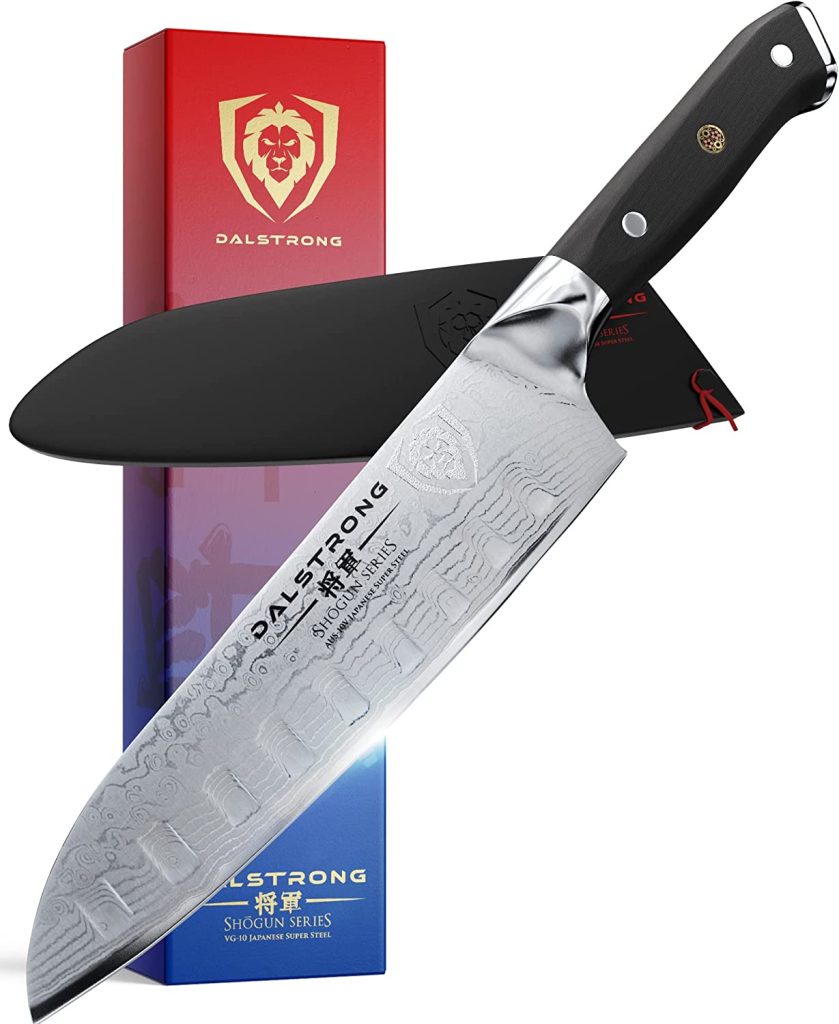


Post Your Thoughts